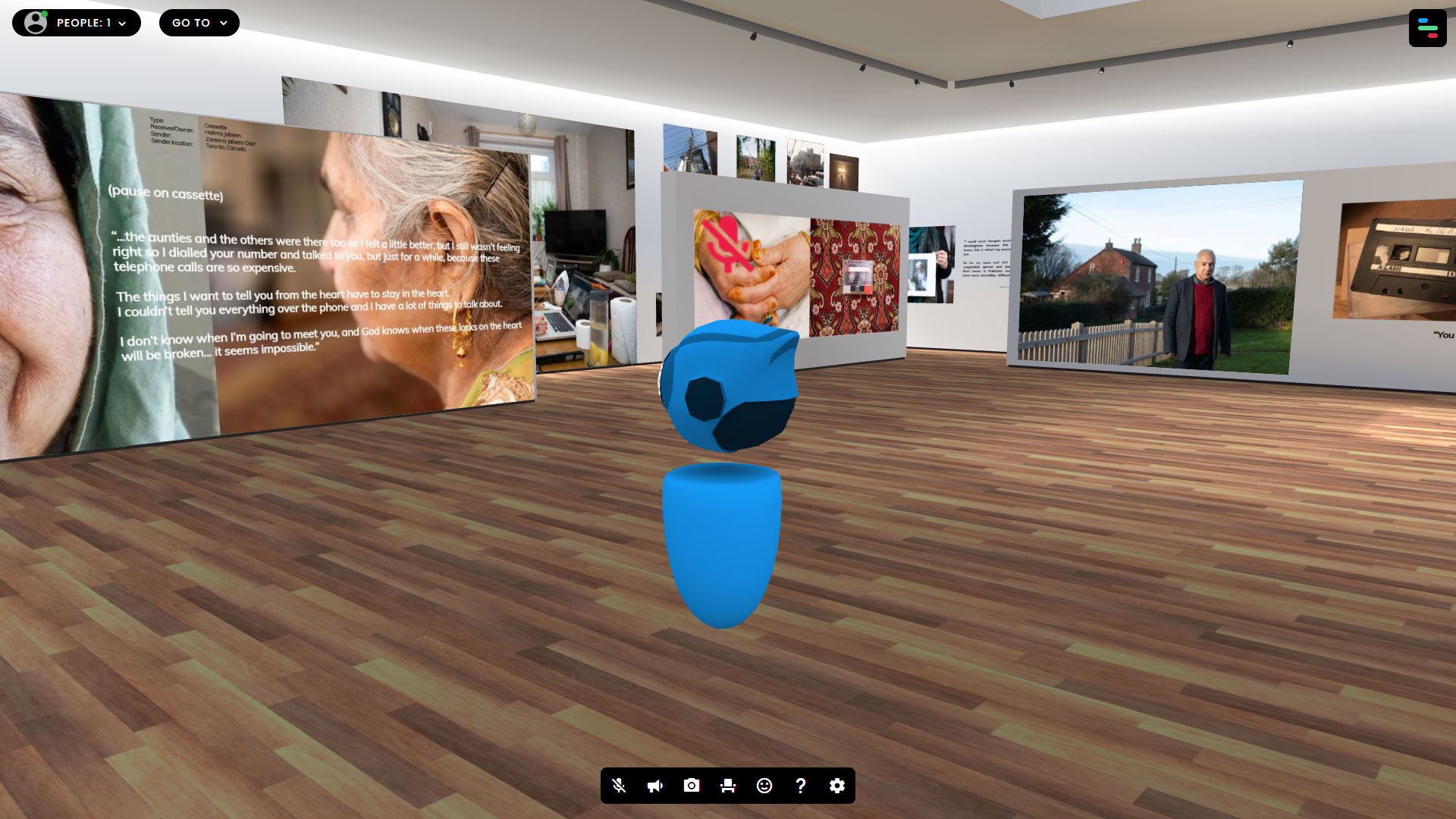DIGITAL EXHIBITION
This virtual exhibition offers an immersive experience, allowing visitors to explore the rich oral histories of families who communicated via cassette tapes. The FrameVR platform enables visitors to navigate a virtual space as an autonomous avatar, listening to recordings and viewing transliterations and translations. This innovative approach preserves and enhances engagement with these historical narratives.
Tape Letters England
Marianne Marplondon was hired to design the Tape Letters England online exhibition in multiple formats, including multi-room and single-scene versions of the exhibition, in some instances modelling experiences in typical gallery settings, providing a simultaneously familiar yet state-of-the-art virtual experience.
A series of online events were held in partnership with South Asian Heritage Month, the People’s History Museum, Ort Gallery, Kala Sangam, the Bishopsgate Institute, the National History Museum in Lahore, and others. Virbella, the developer of the FrameVR platform, chose to showcase the Tape Letters digital exhibition as an example of Extended Reality technology being utilised in a social history context.
Tape Letters Scotland
Kevin Lloyd of KL Studio was hired to design the Tape Letters Scotland online exhibition alongside the physical exhibitions across Scotland. He adapted the physical design of the exhibitions to the digital space, with a selection of stories from archive contributors across Scotland presented in photos, video, audio and transcriptions.
THE TAPE LETTERS OUTPUTS:
● Apps
● Archive
● Digital Exhibition
● Learning Resources
● Photo Series
● Physical Exhibitions
● Podcast
● Poetry Booklet
● Project Booklet
● Radio Series
● Sound Installation
● Talks & Events
● Videos
Modus Arts were keen on producing both physical and digital outputs on the Tape Letters project, and deployed FrameVR, a WebXR technology developed by US-based tech firm Virbella, to produce a browser-based digital exhibition that also ported into true VR space.
This virtual exhibition offers an immersive experience, allowing visitors to explore the rich oral histories of families who communicated via cassette tapes. The FrameVR platform enables visitors to navigate a virtual space as an autonomous avatar, listening to recordings and viewing transliterations and translations. This innovative approach preserves and enhances engagement with these historical narratives.
Tape Letters England
Marianne Marplondon was hired to design the Tape Letters England online exhibition in multiple formats, including multi-room and single-scene versions of the exhibition, in some instances modelling experiences in typical gallery settings, providing a simultaneously familiar yet state-of-the-art virtual experience.
A series of online events were held in partnership with South Asian Heritage Month, the People’s History Museum, Ort Gallery, Kala Sangam, the Bishopsgate Institute, the National History Museum in Lahore, and others. Virbella, the developer of the FrameVR platform, chose to showcase the Tape Letters digital exhibition as an example of Extended Reality technology being utilised in a social history context.
Tape Letters Scotland
Kevin Lloyd of KL Studio was hired to design the Tape Letters Scotland online exhibition alongside the physical exhibitions across Scotland. He adapted the physical design of the exhibitions to the digital space, with a selection of stories from archive contributors across Scotland presented in photos, video, audio and transcriptions.

